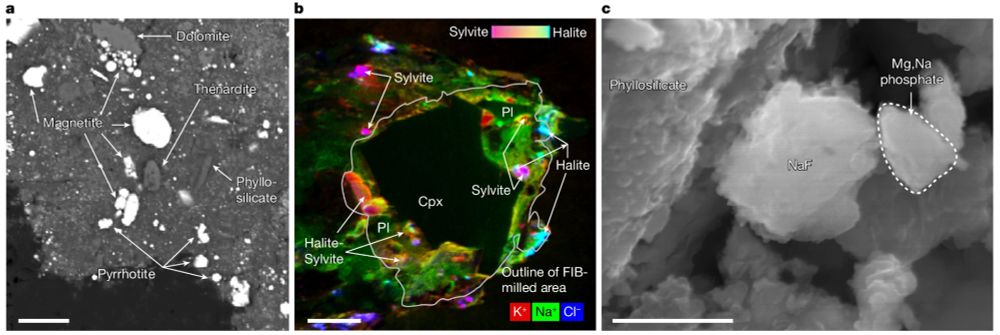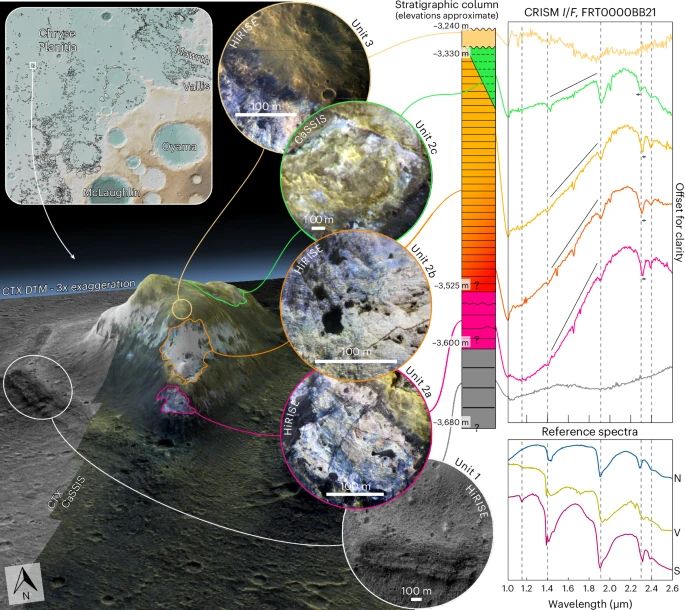
This paper was published in @nature.com by McCoy et al. on January 29th, 2025. (2/2)
Link: www.nature.com/articles/s41...
@planetaryplots.bsky.social
We post an interesting figure from a Planetary Science paper every week. Managed by @henrymanelski.bsky.social, @stephaniementen.bsky.social, and @krislaferriere.bsky.social.

This paper was published in @nature.com by McCoy et al. on January 29th, 2025. (2/2)
Link: www.nature.com/articles/s41...

This figure shows 3 panels. On the left, a clast of the sample includes sodium sulfate grains. The middle panel shows an ion map with halite (NaCl) and sylvite (KCl) identified in a particle. On the right, sodium fluoride grains are identified with phyllosilicates.
This week’s figure shows a close-up view of samples returned by the OSIRIS-REx spacecraft from asteroid Bennu. The authors identify salt minerals in the sample, which could also occur on many astrobiologically relevant bodies in the solar system, including Ceres and Enceladus. (1/2)
09.02.2025 19:35 — 👍 2 🔁 0 💬 1 📌 0
This paper was published by McNeil et al. on Jan. 20th in Nature Geoscience. Link: www.nature.com/articles/s41...
24.01.2025 19:29 — 👍 3 🔁 0 💬 0 📌 0
This plot explores a mound in Mawrth Vallis, an ancient valley on Mars. In the top left is a map showing the location of the mound within the Chryse Planitia region. In the lower left is a 3D view of the mound, rendered using a digital terrain model. CRISM infrared spectra are shown on the right side to compare the mineralogy of various sections of the mound with different elevations and surface expressions. USGS reference spectra for nontronite, vermiculate, and saponite (three clay minerals) are displayed in the bottom right.
This week’s figure shows a km-scale mound in Mawrth Vallis, Mars. Variability in infrared spectral signatures with elevation are used to build a stratigraphic column, which suggests there was a region-wide succession of igneous material followed by extensive aqueous alteration.
24.01.2025 19:29 — 👍 6 🔁 2 💬 1 📌 0